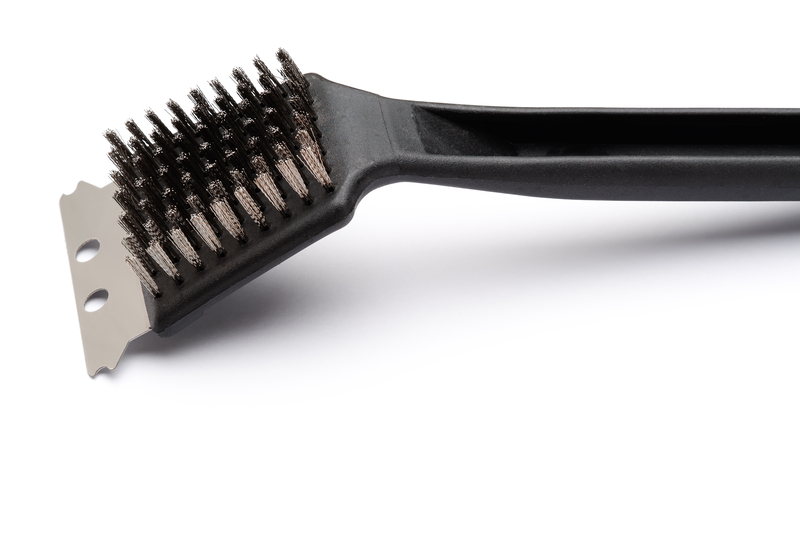Your Go-To Strategy for Maintaining Mould-Free Window Sills
Posted on 23/08/2025
Your Go-To Strategy for Maintaining Mould-Free Window Sills
Window sills are a fantastic feature in any home, offering a spot for natural light, fresh air, or even your favorite potted plant. But lurking in the corners, the threat of mouldy window sills can quickly mar their beauty and compromise your home's air quality. A mould-free window sill isn't just about aesthetics--it's crucial for a healthy living environment. If you've ever wondered how to achieve and maintain window surrounds that are always clean and free from fungus, you're in the right place.
In this comprehensive guide, we'll walk you through a step-by-step mould prevention strategy, share expert cleaning tips, and answer frequently asked questions. Whether you're a homeowner, landlord, or tenant--this article is your complete resource for window sill mould prevention.

Understanding Why Window Sills Get Mouldy
Before you tackle mould, it's essential to know why it seems to love your window sills. Mould thrives in damp, poorly ventilated areas. Windows, being the meeting point between indoor warmth and outdoor cold, are especially vulnerable to condensation — one of the key causes of window mould.
Common Causes of Window Sill Mould
- Condensation: Moisture from warm indoor air cooling on the colder glass and sill surfaces.
- Poor Ventilation: Lack of airflow allows humidity to build up, perfect for mould spores.
- Leaky Windows: Inefficient seals can let rain or melted snow creep inside.
- Neglected Cleaning: Dust and dirt accumulation can feed mould spores, accelerating growth.
- Indoor Plants: Excess water from plant pots can spill onto the sill or windowsill surface, adding moisture.
By identifying these triggers, you can be proactive in your solution and keep those window frames free from mould.
The Ultimate Step-By-Step Mould-Free Window Sill Strategy
Step 1: Regular Maintenance and Rapid Response
- Inspect Weekly: Make a habit of checking your window sills every week for signs of excess moisture, black spots, or mildew odors.
- Act Quickly: If you spot condensation or a spill, wipe it up immediately. Address leaks or failed weather stripping without delay.
- Keep It Clear: Don't crowd sills with too many objects that can block airflow or conceal moisture spots.
Step 2: Improve Indoor Ventilation
- Open Windows: Regularly let in fresh air, especially after showers, cooking, or drying clothes indoors.
- Use Exhaust Fans: Kitchen and bathroom fans help expel humid air outdoors.
- Consider Dehumidifiers: Especially useful during wet seasons or in naturally humid climates.
Well-ventilated rooms drastically reduce condensation on window sills, making it harder for mould to gain a foothold.
Step 3: Manage Indoor Humidity
- Aim for 30-50% Humidity: Use a hygrometer to monitor and adjust humidity levels in your home.
- Address Hidden Sources: Ensure that dryers are vented outside and promptly fix leaks or plumbing issues.
- Limit Indoor Plants: Group plants away from windows if they tend to cause dampness on your sills.
Step 4: Thorough and Safe Cleaning Methods
To keep your window sills mould-free, regular cleaning is vital.
- Use Gentle Cleaners: Wipe sills with a solution of mild soap, water, and a splash of white vinegar--an effective way to prevent the spread of mould spores.
- Disinfect Periodically: Once a month, use a diluted bleach solution (one part bleach to ten parts water) for a deeper clean. Be sure to wear gloves and ventilate the area.
- Dry Thoroughly: Always dry the surface completely to remove residual moisture--especially in corners and grooves.
- Check Caulking and Paint: Cracked caulking or peeling paint can trap moisture. Patch up any issues with appropriate sealants or water-resistant paint.
Step 5: Remediate Existing Mould Responsibly
- Wear Protection: Use gloves, goggles, and a mask to avoid inhaling spores.
- Limit Spread: Open windows, but close doors to other rooms. Use disposable wipes or cloths.
- Treat With Vinegar: Apply undiluted white vinegar to affected spots, let sit for an hour, scrub gently and rinse.
- For Stubborn Mould: Use hydrogen peroxide or a specialized mould removal spray, following package instructions carefully.
- Dispose Responsibly: Throw away used wipes and wash any reusable cleaning tools in hot water immediately.
Step 6: Prevention Through Smart Upgrades
- Double Glazing: Upgrading to double-paned windows can reduce condensation drastically.
- Window Films: These can help some single-pane glass retain more heat, minimizing cold spots where moisture collects.
- Insulate and Seal: Ensure gaps and joints are caulked with waterproof sealant to protect internal frame surfaces from water ingress.
Essential Products and Solutions for Mould-Free Window Sills
- White vinegar & hydrogen peroxide: Natural yet effective mould fighters.
- Dehumidifiers: For controlling high ambient moisture, especially in older homes.
- Microfiber cloths: For gentle and thorough cleaning without scratching surfaces.
- Mould-resistant paint: Perfect for repainting sills and frames in damp-prone rooms.
- Window cleaning squeegee: To remove morning condensation before it drips onto the sill.
- Weather stripping kits: Affordable, effective for sealing window leaks and drafts.
Frequently Asked Questions About Mould on Window Sills
Can black mould on window sills make me sick?
Yes, black mould produces spores and toxins (mycotoxins) that can trigger allergies, worsen asthma, or cause respiratory irritation, especially in young children, elderly adults, and those with compromised immunity. That's why maintaining mould-free window sills is a health priority.
Is vinegar or bleach better for cleaning window sill mould?
White vinegar is generally safer for most finished wood and vinyl surfaces and is non-toxic. Bleach is effective, particularly on non-porous surfaces like uPVC and tiles, but always dilute and ventilate the area. For persistent stains, alternating methods often works best.
How can I stop condensation forming on my window sills?
Use a squeegee or absorbent cloth every morning (especially in winter), keep blinds open to aid airflow, and avoid blocking radiators positioned below windows. Upgrading to double glazing or applying insulation film can also make a big difference.
How often should I clean my window sills to prevent mould?
A quick wipe-down once a week is usually enough in a well-ventilated home. During rainy seasons or in homes with condensation issues, aim for 2-3 times weekly.
Additional Tips for an All-Round Mould-Free Home
- Dry laundry outside or in a vented dryer to limit indoor humidity spikes.
- Move furniture slightly away from exterior walls to promote fuller air circulation.
- Regularly inspect attic and basement windows--these are high-risk zones for mould buildup.
- Direct run-off water away from your windows with properly maintained gutters.

When to Call a Professional
Not all mould problems on window sills can be managed with DIY solutions. If you notice:
- Extensive black mould covering a large section of the window frame or wall,
- Recurring mould growth despite thorough cleaning,
- Ongoing leaks from windows or surrounding walls,
- Unusual health symptoms after exposure, like persistent cough or breathing difficulties,
it's time to consult a mould remediation specialist or building contractor. Unchecked mould can seriously damage property value and health.
Conclusion: Your Route to Mould-Free Window Sills
A little awareness and consistent effort is all it takes to enjoy clean, healthy, and mould-free window sills for years to come. Regular cleaning, prompt repair of leaks, improved ventilation, and smart upgrades are the foundation of prevention. Invest in high-quality materials and establish a routine; your indoor air quality and the long-term value of your home will thank you.
Did you find these strategies helpful? Share your own mould prevention tips or questions in the comments, and keep reading for more home hygiene and maintenance guides!
- Stay proactive--prevention is always easier than remediation.
- Empower yourself and loved ones with regular, safe cleaning habits.
- Remember: a mould-free window sill is a sign of a healthy, happy home!





